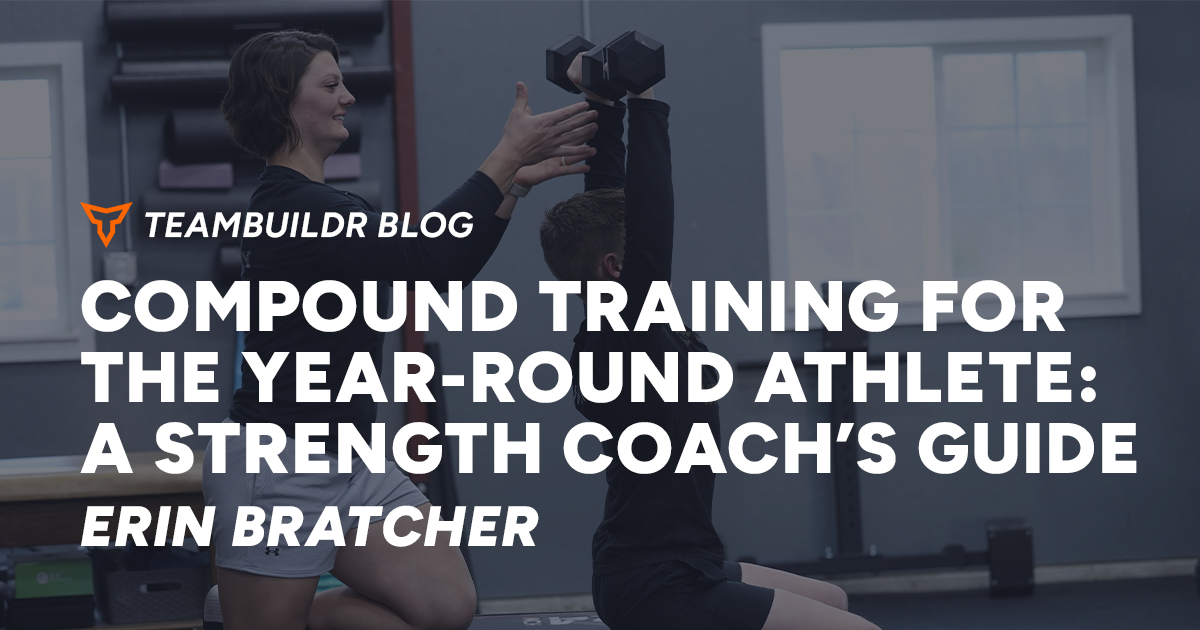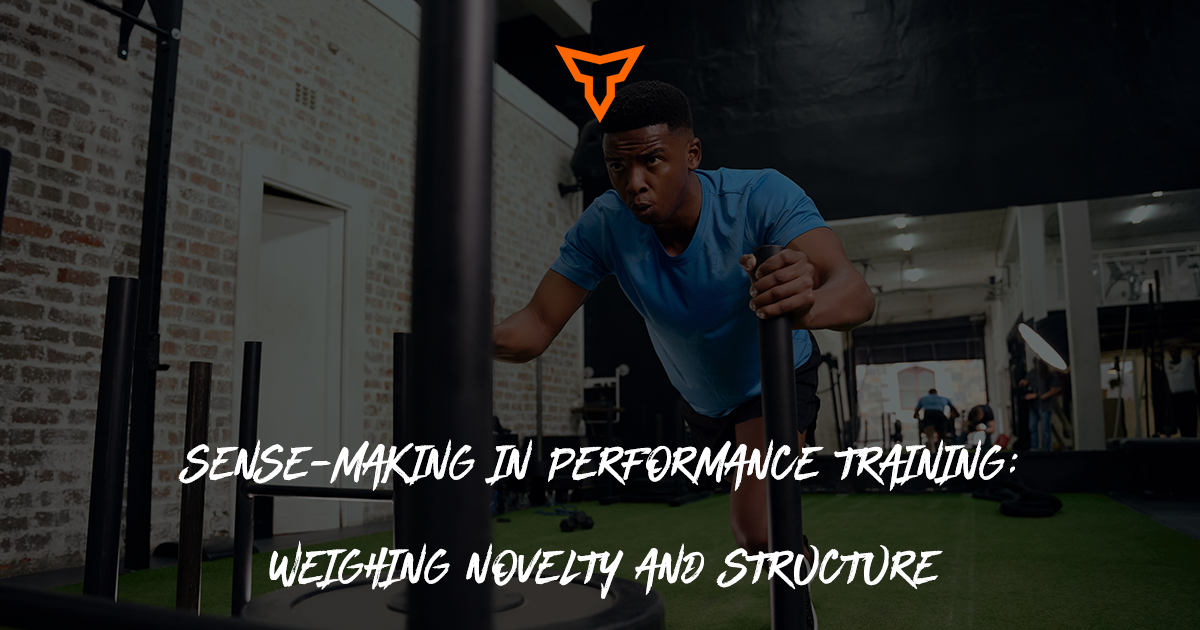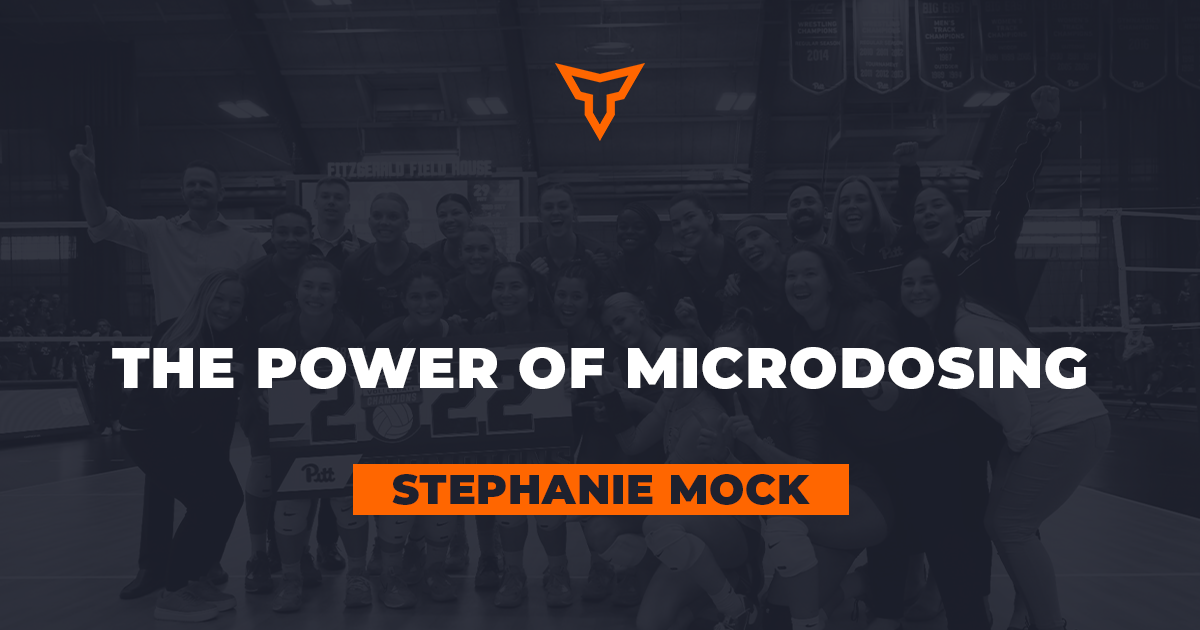Omni Contraction Training: Comprehensive Periodization
How’s that for clickbait?
I must first give credit to the giants whose shoulders I’m standing on; by no means did I invent this training style. I’ve learned it from the likes of Christian Thibaudeau, Ben Prentiss, and Alan Bishop, and simply adapted and successfully implemented it into our setting with numerous clients pursuing various goals. Having repeatedly seen tremendous progress being made with this style of training, across various populations, I truly believe this system can be the key for many athletes to unlocking their performance. Irrespective of periodization preference, most well-rounded coaches will likely include exercises emphasizing eccentric, isometric, and concentric contractions throughout their programs. The Omni Contraction Training System (OCTS) simply provides a framework to ensure that no contraction type is ever completely neglected or forgotten about. I use this primarily in the off-season for athletes, but I’m currently experimenting with ways to use it in-season as well. Let’s dive in!
What is it? How strong are you, really?
Omni-contraction training refers to emphasizing all three phases of movement (Eccentric, Isometric, and Concentric) throughout every microcycle in your offseason, and simply using different relevant training methods and tools based on the overall or primary goal of each mesocycle to do so (block-style periodization). Triphasic training by Cal Dietz and Ben Peterson has gained plenty of popularity in recent years, and for good reason; Cal and his staff have been creating monster athletes who consistently dominate in their respective sports. Having said this, I’ve found OCTS to be a more effective overall training method for the many reasons we will discuss throughout this article.
The main theory is that if we know all three phases of movement are important, we should train them all consistently throughout the offseason and can simply use different training-block-relevant tools and methods to do so. For years we’ve asked athletes how strong they are; How much can you squat or bench, bro? What many of us have failed to realize is that we’re painting an incomplete picture. What we’re asking them is this; how strong are you concentrically? Can anyone see the problem here? We’re missing two-thirds of the puzzle! While concentric contractions are of course the most important in sport performance and the kingpin of all performance, we’d be foolish to neglect the other two and fail to see their value in enhancing concentric outputs and overall performance. 
Mastery of Movement
I would argue that the most important part of our job as performance specialists is to ensure that our athletes move safely, efficiently, and effectively; I’ve found no other system as effective as the OCTS for checking all of these boxes! A lot of our athletes' and clients’ strength and performance improvements come from simply moving more efficiently and optimally. This exact reason is why I’ve shifted my perspective of who this training style is appropriate for. Whereas I used to think it was only for advanced athletes based on some of the high-level coaches implementing and popularizing it, I’ve now come to believe that when appropriate tools and progressions are utilized, this training style can be appropriate for all athletes! For example: just imagine how picturesque your 8th grade athlete’s pushup or bodyweight squat will be when they focus on eccentric pushups and squats on Monday, isometric pushups and squats on Wednesday, and concentric pushups and squats on Friday! As much as this can be used as an advanced training style, it can also really be used simply and can help set the all-important foundation for decades of solid training to come.
Phases
How do we typically program training phases using the OCTS? The phases we use in this system are consistent with those that most of us are used to; what’s unique is the specific tools and methods we choose to implement within these training protocols.
Accumulation – Volume-based phase with a major focus on accumulating reps, time under tension, and skill practice; this is not to be confused with a pure hypertrophy phase! Many athletes may shy away from this phase, especially in weight-class sports, for fear of “getting too big and bulky” or “putting on too much weight.” Total volume and time under tension can be manipulated to ensure athletes are either putting on muscle or working to maintain their current body weight depending on what their personal goals are, but this phase is still crucial for the reasons listed above: skill practice and acclimatizing the body to training before increasing intensity in subsequent phases. We also know that a lot of this bodyweight manipulation will be highly governed by nutritional strategies, another reason not to panic. Jumping straight into the heavy loads appropriate for an intensification phase from a structural balance or GPP phase, or even worse directly after the offseason, is a recipe for disaster! Additionally, as you will learn below, the tools we choose to use will vary between the Accumulation and Intensification phases, helping differentiate and necessitate both phases in the training process.
Intensification – The focus is on raising intensity and improving maximal strength, motor unit recruitment, and intermuscular coordination. Volumes will be much lower in comparison to our accumulation phase, while intensity will subsequently be much higher. Later we will discuss some of the differentiating tools and techniques we will use during intensification phases.
Realization – Taking the gains you’ve made and “realizing” how to use and apply them. In classic terms, this is our speed and power phase of training. If intensification is the thunder, then realization is the lightning! This will, of course, look different depending on the overall goals and needs of the athlete; realization may include more top-speed and speed-strength work for a wide receiver, while an offensive lineman may favor more heavily the strength-speed and maximal strength portions of the strength curve.
Implementation and Periodization
I primarily find myself implementing the OCTS principles in the off-season for my athletes. Regarding periodization and phase potentiation, this is primarily based on a needs analysis of each athlete or the majority of the team when appropriate, as well as training age and training history. Below are a few common routes an athlete may typically seek to take in their offseason training, and how I would personally approach them:
How much time do we have available?
I typically program 3-4 week mesocycles, so when designing an athlete’s offseason, I like to start with the end goal in mind and work backward. An athlete with an 18-week offseason will of course be programmed for vastly differently than an athlete whose offseason only has 12 weeks available to train.
What is the athlete’s training age?
An athlete with a lower training age will need more time spent during accumulation phases for two main reasons; they need more time spent accumulating quality reps to facilitate motor learning and skill development, and they are simply not strong enough to get much out of a traditional realization phase.
Needs Analysis
Below are some incredibly simple criteria that will help determine primary training focus, as well as periodization examples assuming an 18-week offseason comprised of 6, 3-week mesocycles. These are not meant to be perfect or set in stone, but to simply demonstrate how each most relevant training block emphasis will make up a bigger piece of the overall training pie:
Size
More time may be dedicated to the Accumulation phases
Mesocycle 1 - Accumulation; Mesocycle 2 - Intensification; Mesocycle 3 - Accumulation; Mesocycle 4 - Intensification; Mesocycle 5 - Accumulation; Mesocycle 6 - Realization
Strength
More time may be dedicated to the Intensification phases
Mesocycle 1 - Accumulation; Mesocycle 2 - Intensification; Mesocycle 3 - Intensification; Mesocycle 4 - Accumulation; Mesocycle 5 - Intensification; Mesocycle 6 - Realization
Power
More time may be dedicated to the Realization phases
Mesocycle 1 - Accumulation; Mesocycle 2 - Intensification; Mesocycle 3 - Realization; Mesocycle 4 - Intensification; Mesocycle 5 - Realization; Mesocycle 6 - Realization
Will I utilize linear periodization or more of an undulating style? As always, it depends! Although it gets a bad reputation, linear periodization with a model like this can work exceptionally well for athletes with a lower training age. Conversely, for my athletes who know their way around the weight room a little better, I will typically favor undulating periodization. Remember that block-style periodization is focused but doesn’t have to be exclusive. As we will see below in our “Techniques to Use” section, we will have some semblance of power, hypertrophy, and strength work blended into each phase of our training; each phase of training will simply have one primary focus point (also referred to oftentimes as vertical integration).
Exercise Selection
I originally thought this system was better suited for athletes with higher training ages. Boy, was I wrong! As I mentioned above, when implementing the OCTS, we will see incredible improvements in movement quality and efficiency. With this in mind, use the simplest and most effective tools, techniques, and methods based on needs, training age, and practicality. A late elementary school to an early high school-aged athlete may focus their main workaround mastery of bodyweight movements utilizing all three contraction types and then progress to lighter weights (DB’s, KB’s, and Barbells), as well as mastering more extensive plyometrics and basic hop, skip, and jump patterns. Conversely, an athlete with over a decade of proper training experience and a high base of relative strength may begin to utilize some more advanced tools like bands, chains, weight releasers, specialty bars, resisted sprint drills, and more intensive plyometrics.
Exercise Selection is where the coach’s discretion comes into play. I would encourage you to use the most basic option available to get the job done which will help to develop a runway of progression for the athlete’s future. As Keir Wenham-Flatt has referenced in the past, if you use tools and techniques that are too advanced too early, you rob the athlete twice. These tools and techniques won’t work as well the first time you use them since the athlete is not ready for them, and they won’t work later when you try to reuse these methods because the athlete has already been exposed to them! Beware of the shiny object syndrome that we’re all guilty of from time to time, myself included.
Techniques to Use
We can use a variety of different contraction-relevant techniques and methods to train our athletes and clients. For reference, a few are listed below:
ECCENTRIC:
Accentuated Eccentrics – Simply ensuring the negative portion of the lift is emphasized, typically with an eccentric duration of 4-10 seconds on each rep, using a weight that you can still lift concentrically without assistance. Primarily included during the accumulation and intensification phases.
Supramaximal Eccentrics – Facilitated by using either a spotter to help lift the weight concentrically or weight releasers (eccentric hooks). Primarily included during intensification phases in cluster fashion where there may be an 80% - 20% bar load to hook load ratio, or during dynamic effort work as part of a realization phase protocol where there may be closer to a 50% - 50% bar load to hook load ratio.
Overspeed Eccentrics – Facilitated by adding bands to the barbell, also oftentimes referred to as hyper-gravity. Being able to overcome both gravity and the increased eccentric load of the bands will help improve your athletes’ reactive abilities.
Olympic Lifts – Primarily performed from the various hang positions to incorporate the eccentric component of the lift. We will primarily use higher-volume Olympic lifting complexes during the accumulation phase and then transition more to the classic lifts with varying set/rep schemes during the intensification and realization phases.
ISOMETRIC:
Yielding Isometrics – Pausing (typically between 1 and 3 times) during the eccentric portion of the lift and trying to prevent any movement, before completing the lift concentrically.
Overcoming Isometrics – Pushing against an immovable object to improve joint angle-specific strength and maximal motor unit recruitment.
Drop-Catch Isometrics – Isometrics preceded by a rapid eccentric, teaching the athlete how to effectively slam the brakes.
Long-Duration Isometrics – Great for tendon health and can also have an analgesic effect for athletes who find themselves in pain.
Olympic Lifts – Primarily adding a concentric pause during the lift. i.e. Snatch or Clean variation that starts on the floor; pauses below, at, or above the knee; and then is performed to completion. As mentioned above, we will primarily use higher volume Olympic lifting complexes during the accumulation phase and then transition more to the classic lifts with varying set/rep schemes during the intensification and realization phases.
CONCENTRIC:
Bottoms Up Concentrics – Typically performed by starting with the bar on pins at a predetermined height and lifting, effectively removing the stretch reflex and improving our athletes’ ability to produce force from a dead stop with no momentum; deadlifts also naturally fall into this category.
Concentrics – Put simply, lifting the weight (or your bodyweight during bodyweight exercises). Concentric contractions are still the most important of the three and the foundation upon which athletic performance is measured and displayed; the OCTS simply demonstrates that their outputs will be limited without also considering the importance of developing eccentric and isometric capabilities.
Chains – In the same way we use bands on eccentric day to magnify the eccentric forces experienced during the movement and develop our ability to overcome them, we use chains primarily on concentric day, especially through the concept of abrupt loading (high degree of variation in weight between the bottom and top of the lift to heavily emphasize concentric abilities). They differ from bands since there is no increased acceleration during the eccentric phase of the lift, which is why they naturally help us emphasize the concentric portion of the lift.
Ballistics – Explosive contractions where we release the implement, typically medicine ball or barbell throw variations.
Sled Work – Sled work is concentric as there is no load being applied isometrically or eccentrically during any of our typical sled exercises. This makes it a perfect fit for concentric days and helps differentiate it from eccentric or isometric days. Sled work can both improve our strength and conditioning, as well as improve recovery when programmed appropriately.
Olympic Lifts – Again we may use complexes during accumulation phases and then more heavily emphasize the classic lifts during intensification and realization phases, but one unique wrinkle we like to throw in on concentric focused days is the implementation of shortened-range Olympic lifts facilitated through the use of blocks. Being able to go zero-to-100 real quick with the athlete essentially “unloaded” while the bar is resting on the blocks, and then creating a ton of force in minimal time, is a perfect tool to use on concentric days.
Weekly Layout
These are some of the typical layouts that I’ve used myself or seen with the Omni Contraction Training System. These are only about weight room work and do not include any skill work or conditioning you should also be performing relative to your sport. In a later section, I will also give my opinion on how to incorporate sprint work.
3-Day:
This is the most classic setup of the omni-contraction training system:
Day 1 – Full Body Eccentric
Day 2 – Full Body Isometric
Day 3 – Full Body Concentric.
This will typically be performed on non-consecutive days: Monday-Wednesday-Friday for example.
4-Day:
Typically, the 4-day format will follow one of two options:
Day 1 – Full Body Eccentric
Day 2 – Full Body Isometric
Day 3 – Full Body Concentric
Day 4 – Gap Day (accessories, weak point training, ESD).
This will typically be performed on non-consecutive days as well other than the gap day: Monday-Wednesday-Friday-Saturday for example.
OR
Day 1 – Full Body Eccentric
Day 2 – Full Body Isometric
Day 3 – Lower Body Concentric
Day 4 – Upper Body Concentric.
This will typically be performed on non-consecutive days for the full bodywork and can be performed on two back-to-back days for the upper and lower days: Monday-Wednesday-Friday-Saturday for example.
6 Day: I don’t typically perform the system this way, but just for argument’s sake you could get creative if you were limited on time per day but could train frequently. It may look something like this:
Day 1 – ECC Lower
Day 2 – ECC Upper
Day 3 – ISO Lower
Day 4 – ISO Upper
Day 5 – CON Lower
Day 6 – CON Upper
2-Day:
I put this last because it’s the one I use the least. It feels too far stripped away from the original system to even be included in the same discussion, but for what it’s worth, if you only have two days a week with an athlete and want to try implementing these principles, this is how I’ve typically done it:
Day 1: Explosive work during the A series, Eccentrics on B series exercises, concentric focus in C (and when applicable D) series.
Day 2: Explosive work during the A series, Isometrics on B series exercises, concentric focus in C (and when applicable D) series.
Incorporating Sprint Work
To ensure I’m covering as many bases as possible, I like to microdose sprinting throughout the week and try to make the sprint drills I’m using relevant to the day’s theme when possible. This typically includes more deceleration-based work on Eccentric Days and Harder Start accelerations on Concentric Days. On Isometric days I may either pair overcoming isometrics with sprints or use this day to train more multidirectional speed, especially using principles from the 8 Vector system (shoutout to Nick DiMarco and Jordan Nieuwsma). While dedicated speed days are also a great idea, we all know that when working with athletes, things come up and unforeseen absences often occur. Microdosing speed work still ensures that the athletes are consistently and frequently exposed to this imperative training and reduces the likelihood of unplanned absences due to unforeseen circumstances.
Scalability and Predictability as a Staff
We always fall to the level of our systems. While you and your staff of course don’t HAVE to use the OCTS, it is a great one that, once understood, can be widely and seamlessly applied and scaled to a variety of different goals and skill levels. You could have an entire team using these principles and simply plug and play. This makes it easy to understand for both coaches and athletes alike. It’s effective for coaches to be able to progress, regress, and lateralize seamlessly on an individual athlete basis when necessary, and having a system to fall back on makes this process easier. Additionally, I’ve noticed increased buy-in and understanding from athletes when they know the layout of their typical training week and the associated theme of each training day.
Bonus: Exclusive for Athletes?
Working in the private sector and having the privilege of working with general population clients as well as athletes, I can tell you that this system also works great with these folks! With most of the trainees in this population primarily being interested in strength and size gains, the OCTS can be the perfect plan to accomplish these goals. If you’re working with washed-up meatheads who’ve been training hard for years and have put a lot of wear and tear on their joints, the OCTS is also full of a variety of effective techniques we can use to “make the light weights feel heavy” and ensure our clients are still getting an effective workout that subjectively feels difficult while, naturally, the total load of the implement we’re using is reduced. While the OCTS may not include some of the typical tools we use with athletes like sprints, jumps, and Olympic lifts, we can still apply the same principles and reap some pretty great benefits.
In Conclusion
While many roads lead to Rome, the Omni Contraction Training System has stood the test of time and can be a great option for a variety of different populations to help get them safely, efficiently, and effectively to their destination. While these examples were not meant to be exhaustive, this is a sneak peek into a periodization style you may have never heard of or implemented and I hope you will try it with your athletes and report back on your results! Let’s all move the industry forward together and keep finding ways to improve the results and experience of those athletes and clients we’re fortunate enough to be able to serve.
Subscribe to our blog
Subscribe to receive the latest blog posts to your inbox every week.
Related posts

Compound Training for the Year-Round Athlete: A Strength Coach’s Guide

Sense-Making in Performance Training: Weighing Novelty and Structure

